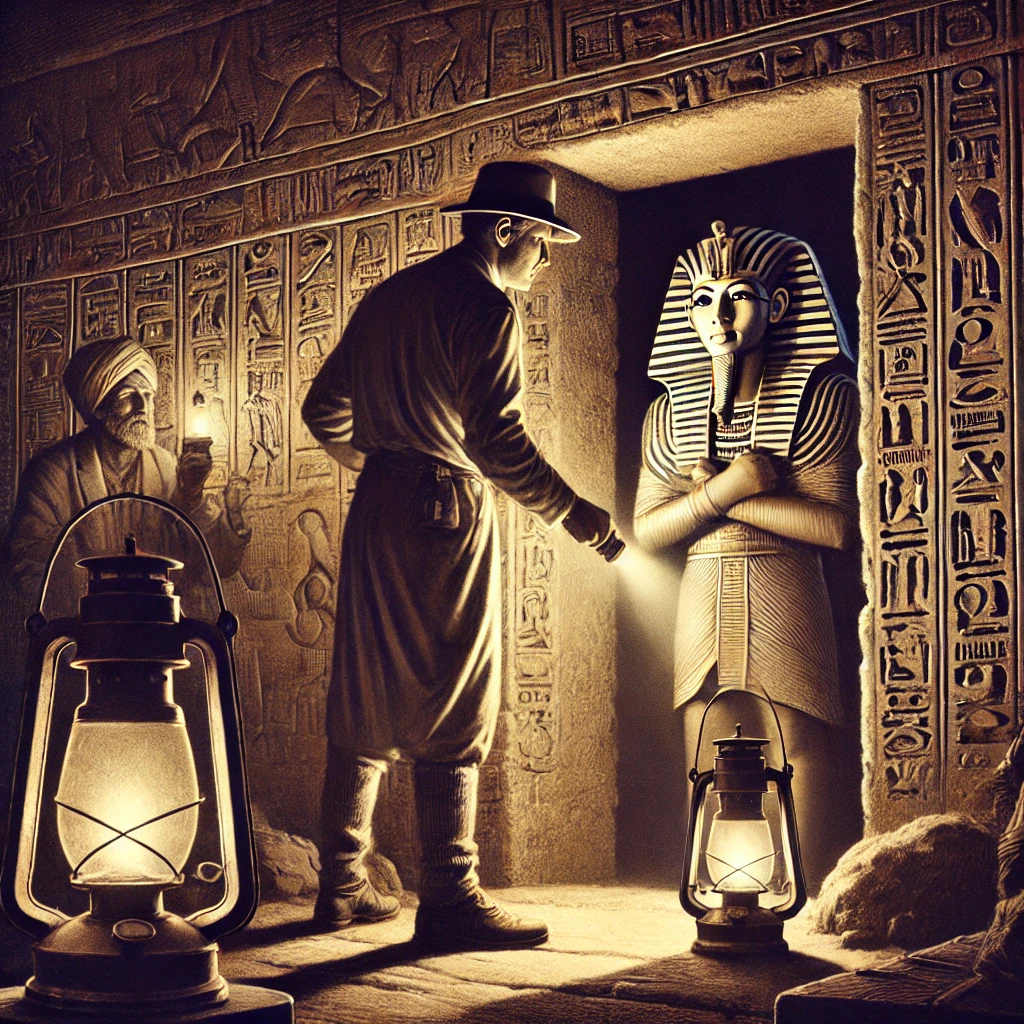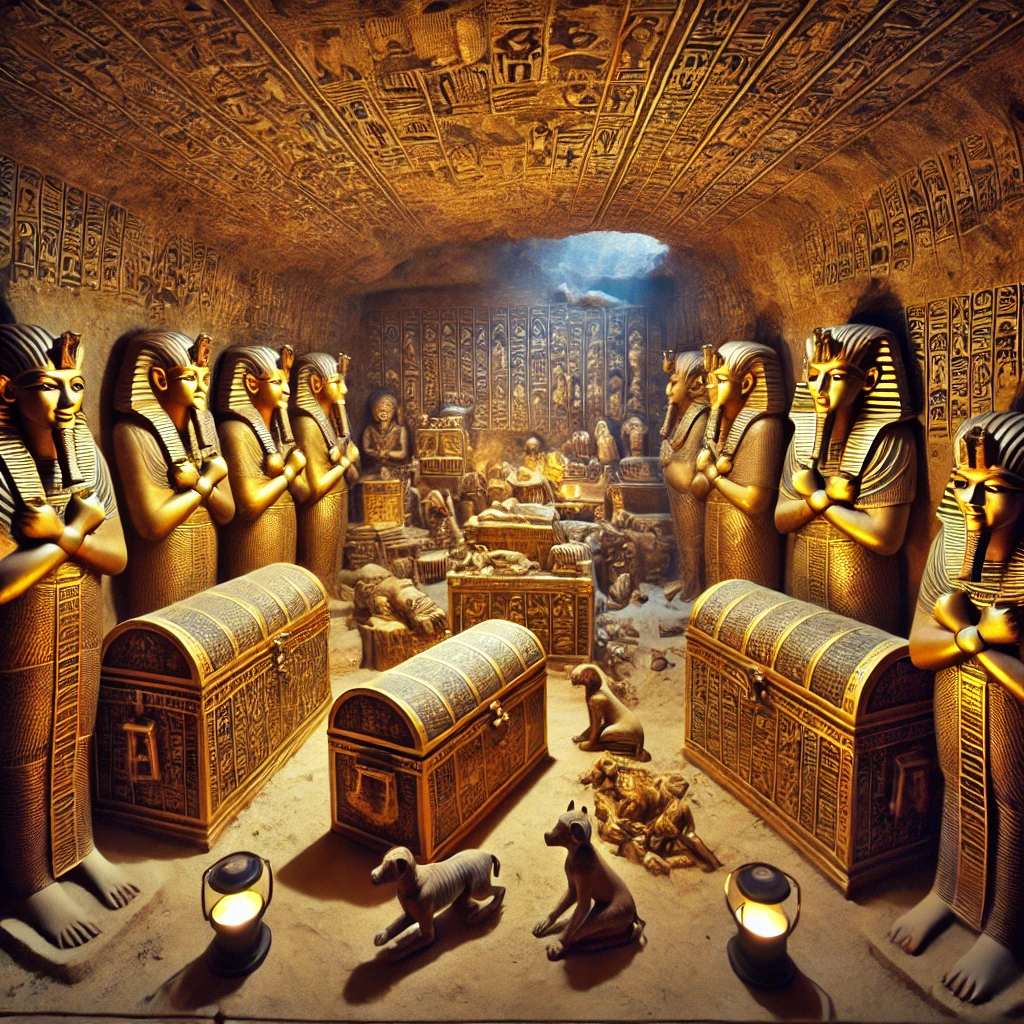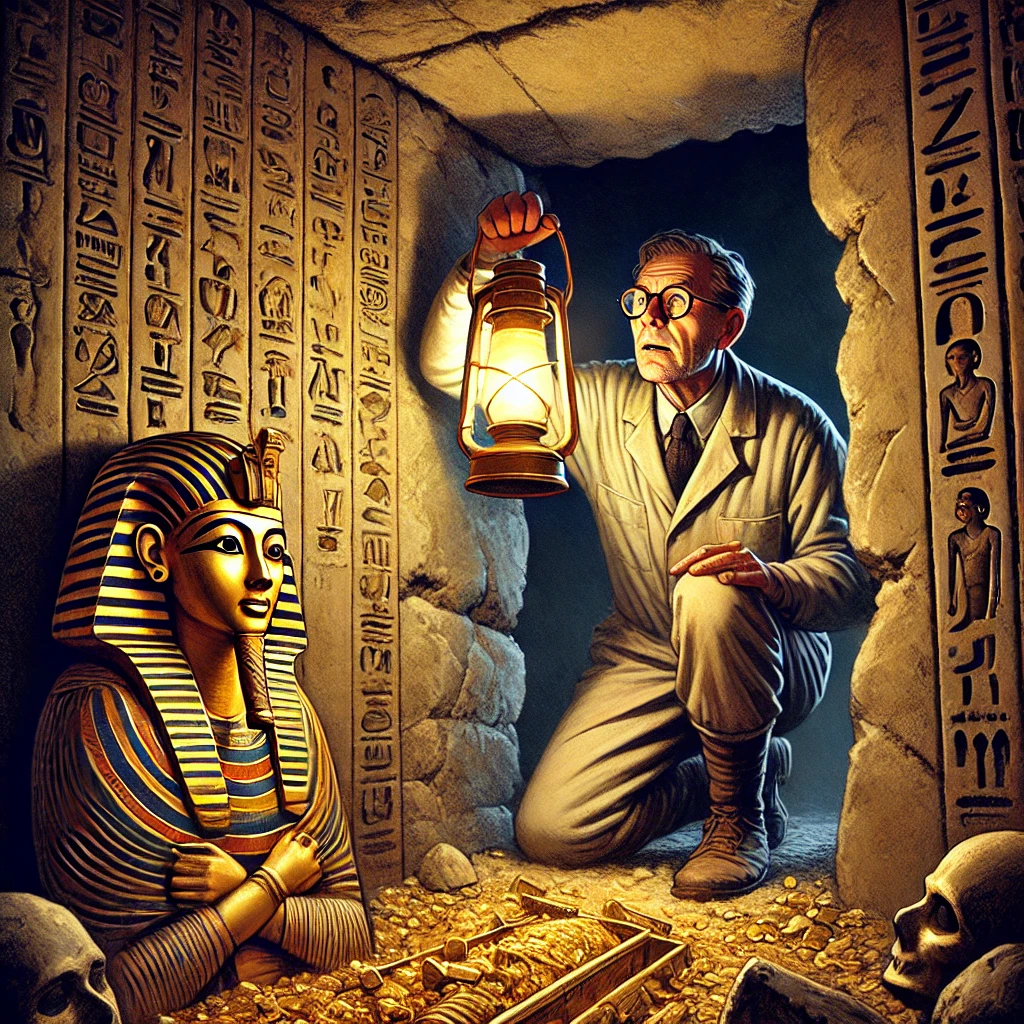A momentous archaeological discovery unfolded on February 16th, 1923, as Howard Carter, the British archaeologist, opened the sealed door of King Tutankhamun’s tomb in the Valley of the Kings, Egypt, revealing a treasure trove of artifacts from ancient Egyptian civilization. This discovery not only captivated the world with its opulence and historical significance but also reshaped our understanding of ancient Egypt, its culture, and its burial practices.
Howard Carter’s journey to uncovering King Tutankhamun’s tomb was marked by years of meticulous excavation and perseverance. Funded by British aristocrat Lord Carnarvon, Carter had been exploring the Valley of the Kings since 1917, driven by a strong belief that the tomb of the relatively unknown Pharaoh Tutankhamun had yet to be found. On November 4, 1922, Carter’s team discovered the first step leading to the tomb, and after weeks of careful excavation, they reached the sealed door. The momentous occasion came on February 16, 1923, when Carter officially opened the door, revealing a dazzling array of treasures untouched for over 3,000 years.

The Discovery of a Lifetime
The anticipation surrounding the tomb’s opening was immense. Carter famously peered through a small hole in the door, and when asked if he could see anything, he replied, “Yes, wonderful things.” This simple yet profound statement captured the awe and wonder that would sweep across the globe. The tomb was structured in four chambers filled with priceless artifacts, each meticulously crafted and preserved, shedding light on the grandeur of Egypt’s 18th Dynasty.
Unveiling Ancient Treasures

Inside the tomb, Carter and his team encountered an astonishing collection of artifacts, including gold chariots, jewelry, statues, and the now-iconic golden funerary mask of Tutankhamun. The tomb’s discovery was unparalleled due to its relatively undisturbed state, providing a rare and comprehensive glimpse into the wealth, artistry, and burial customs of ancient Egypt. The meticulous documentation and preservation efforts led by Carter set new standards for archaeological practices, emphasizing the importance of detailed recording and careful conservation.
The discovery also offered invaluable insights into the life and reign of King Tutankhamun, a pharaoh who ascended the throne at a young age and whose reign was relatively short. Despite his limited time as ruler, the lavishness of his burial goods suggested a society that placed immense importance on the afterlife, believing that such treasures would accompany and aid the pharaoh in his journey beyond death.
The Lasting Impact on History and Culture

The opening of King Tutankhamun’s tomb sparked a global fascination with ancient Egypt, often referred to as “Tutmania.” Exhibitions of the tomb’s treasures attracted millions of visitors worldwide, influencing art, fashion, and even architecture during the 1920s and beyond. Moreover, the discovery reignited scholarly interest in Egyptology, leading to further significant archaeological finds and advancements in our understanding of ancient Egyptian history.
Today, the legacy of Howard Carter’s discovery continues to resonate. King Tutankhamun’s artifacts are housed in the Egyptian Museum in Cairo, and plans for their permanent display in the Grand Egyptian Museum highlight the enduring allure of this ancient civilization. The story of the young pharaoh, whose reign was brief yet whose tomb became the most famous archaeological find in history, serves as a testament to the rich and enduring legacy of ancient Egypt.
